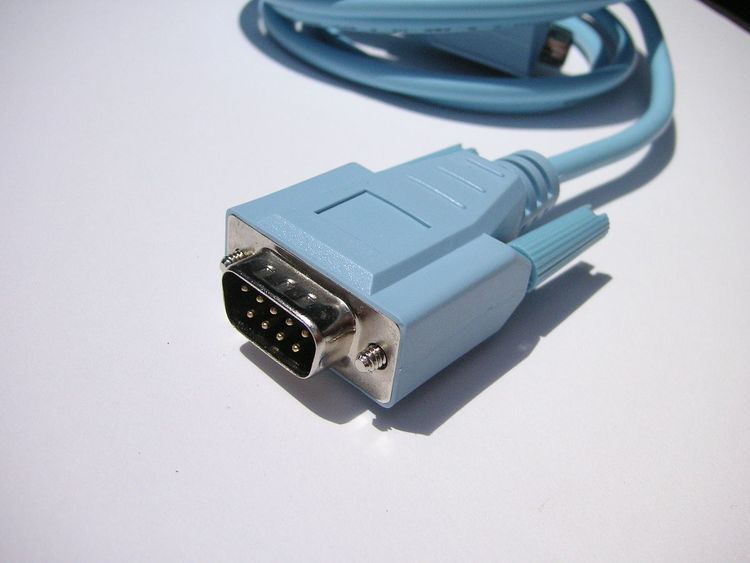 | ||
A serial cable is a cable used to transfer information between two devices using a serial communication protocol. The form of connectors depends on the particular serial port used. A cable wired for connecting two DTEs directly is known as a null modem cable.
Maximum cable lengths
The maximum working length of a cable varies depending on the characteristics of the transmitters and receivers, the baud rate on the cable, and the capacitance and electrical impedance of the cable. The RS-232 standard states that a compliant port must provide defined signal characteristics for a capacitive load of 7003250000000000000♠2500 pF. This does not correspond to a fixed length of cable since varying cables have different characteristics. Empirically tested combinations of bit rate, serial ports, cable type, and lengths may provide reliable communications, but generally RS-232-compatible ports are intended to be connected by at the most a few tens of metres of cable. Other serial communications standards are better adapted to drive hundreds or thousands of metres of cable.
This cable has short transmission distance because of noise limiting the transmission of high numbers of bits per second when the cable is more than 15 m long. This means that the transmitting and receiving lines are referenced to ground. It is cheap to purchase and is simple to join and connect. It is suitable for unbalanced circuits. Each end of the cable can be connected to only one device.
